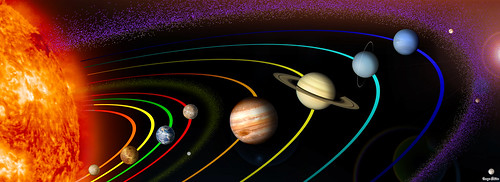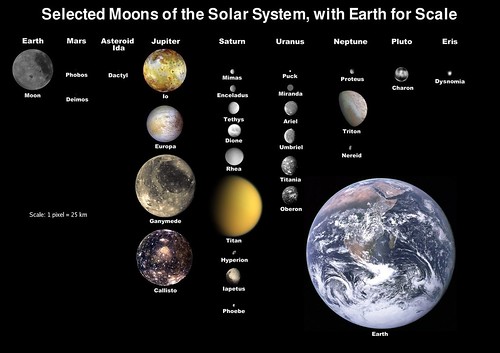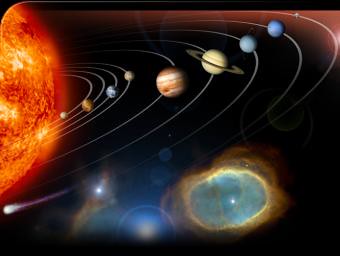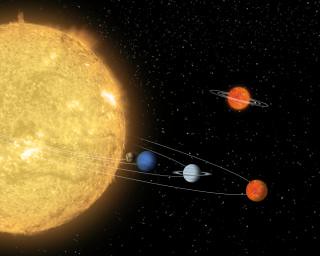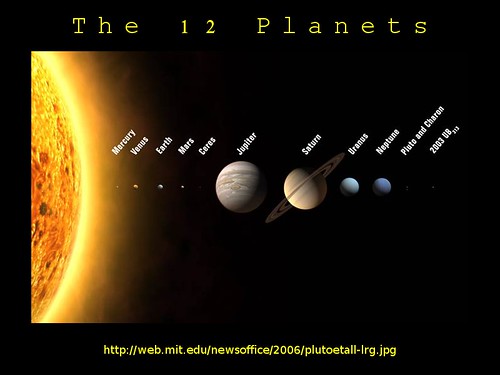| Share Presentation: https://NeoK12.com/pres/ZSOLSYS5 | |
Celestial Bodies
|
The Solar System[a] consists of the Sun and the astronomical objects gravitationally bound in orbit around it, all of which formed from the collapse of a giant molecular cloud approximately 4.6 billion years ago.
| ||||
|
The Solar System is also home to a number of regions populated by smaller objects.
The asteroid belt, which lies between Mars and Jupiter, is similar to the terrestrial planets as it is composed mainly of rock and metal. Beyond Neptune's orbit lie the Kuiper belt and scattered disc; linked populations of trans-Neptunian objects composed mostly of ices such as water, ammonia and methane. | ||||
|
In addition to thousands of small bodies[e] in those two regions, several dozen of which are considered dwarf-planet candidates, various other small body populations including comets, centaurs and interplanetary dust freely travel between regions. Six of the planets and three of the dwarf planets are orbited by natural satellites,[b] usually termed "moons" after Earth's Moon. Each of the outer planets is encircled by planetary rings of dust and other particles.
| ||||
|
The solar wind, a flow of plasma from the Sun, creates a bubble in the interstellar medium known as the heliosphere, which extends out to the edge of the scattered disc.
| ||||
|
Of the many objects that orbit the Sun, most of the mass is contained within eight relatively solitary planets[e] whose orbits are almost circular and lie within a nearly flat disc called the ecliptic plane. The four smaller inner planets, Mercury, Venus, Earth and Mars, also called the terrestrial planets, are primarily composed of rock and metal. The four outer planets, the gas giants, are substantially more massive than the terrestrials. The two largest, Jupiter and Saturn, are composed mainly of hydrogen and helium; the two outermost planets, Uranus and Neptune, are composed largely of ices, such as water, ammonia and methane, and are often referred to separately as "ice giants".
| ||||
|
Six of the planets and three of the dwarf planets are orbited by natural satellites,[b] usually termed "moons" after Earth's Moon. Each of the outer planets is encircled by planetary rings of dust and other particles.
| ||||
Share this Presentation: https://NeoK12.com/pres/ZSOLSYS5 NeoK12.com - Educational Videos, Lessons, Quizzes & Presentations
NeoK12.com - Educational Videos, Lessons, Quizzes & Presentations
All images are linked from Flickr Creative Commons under CC BY, CC BY-SA, CC0. Click attribution link under image for full details.
